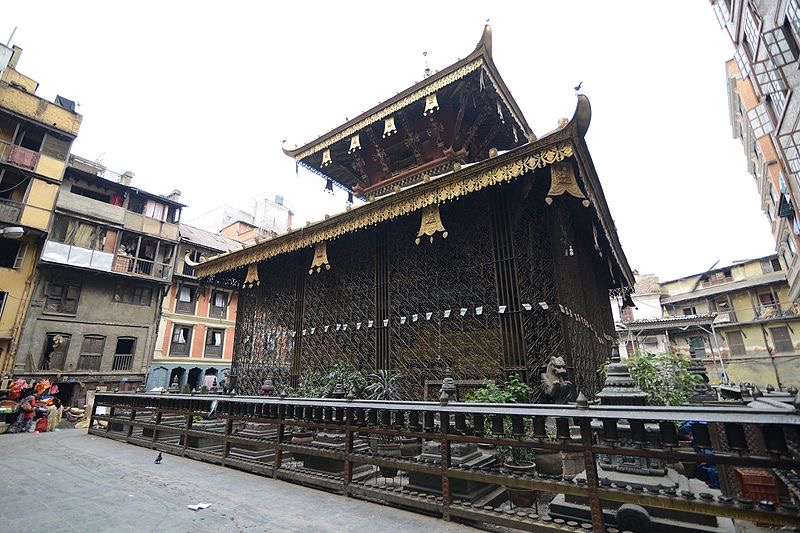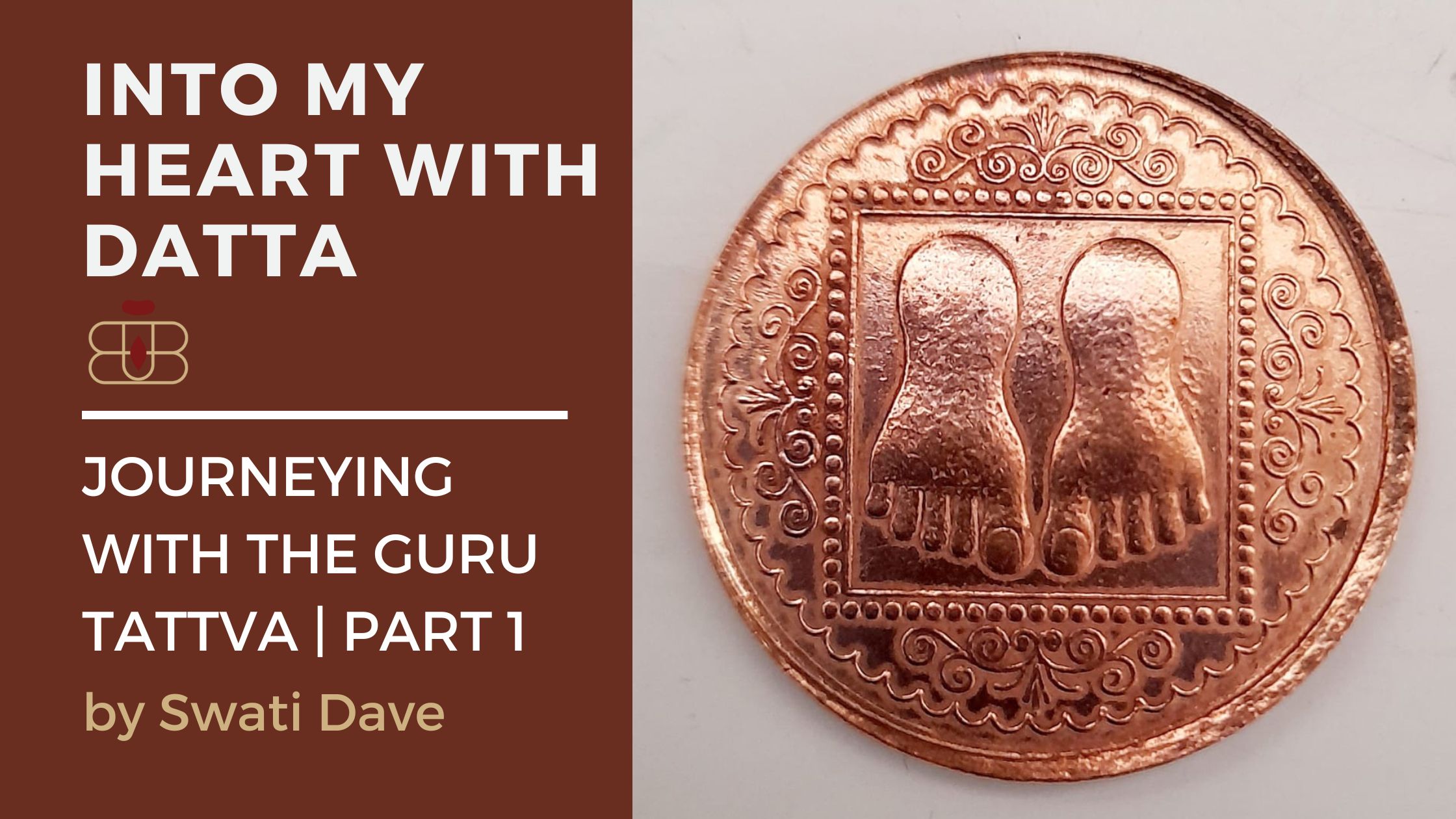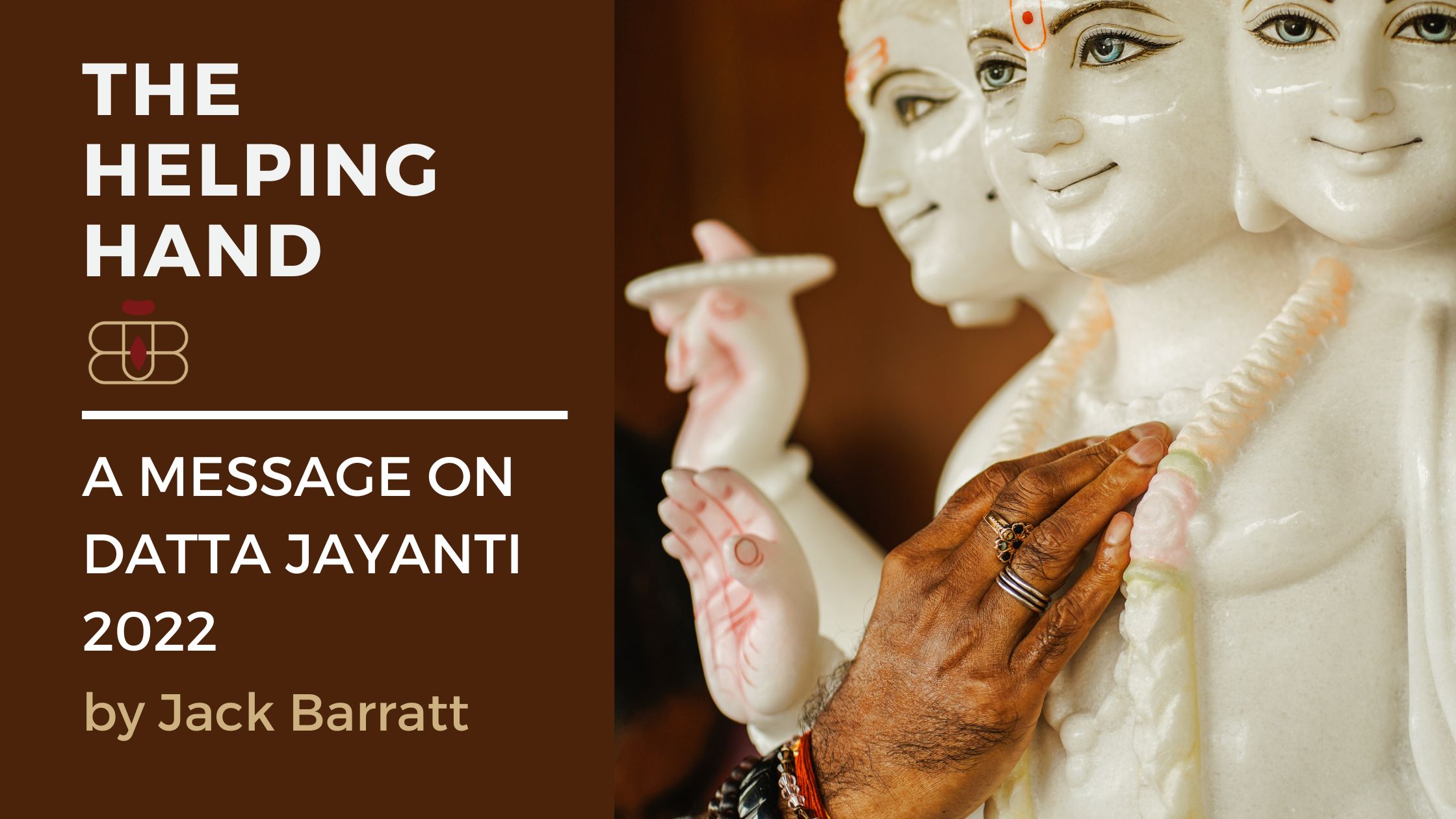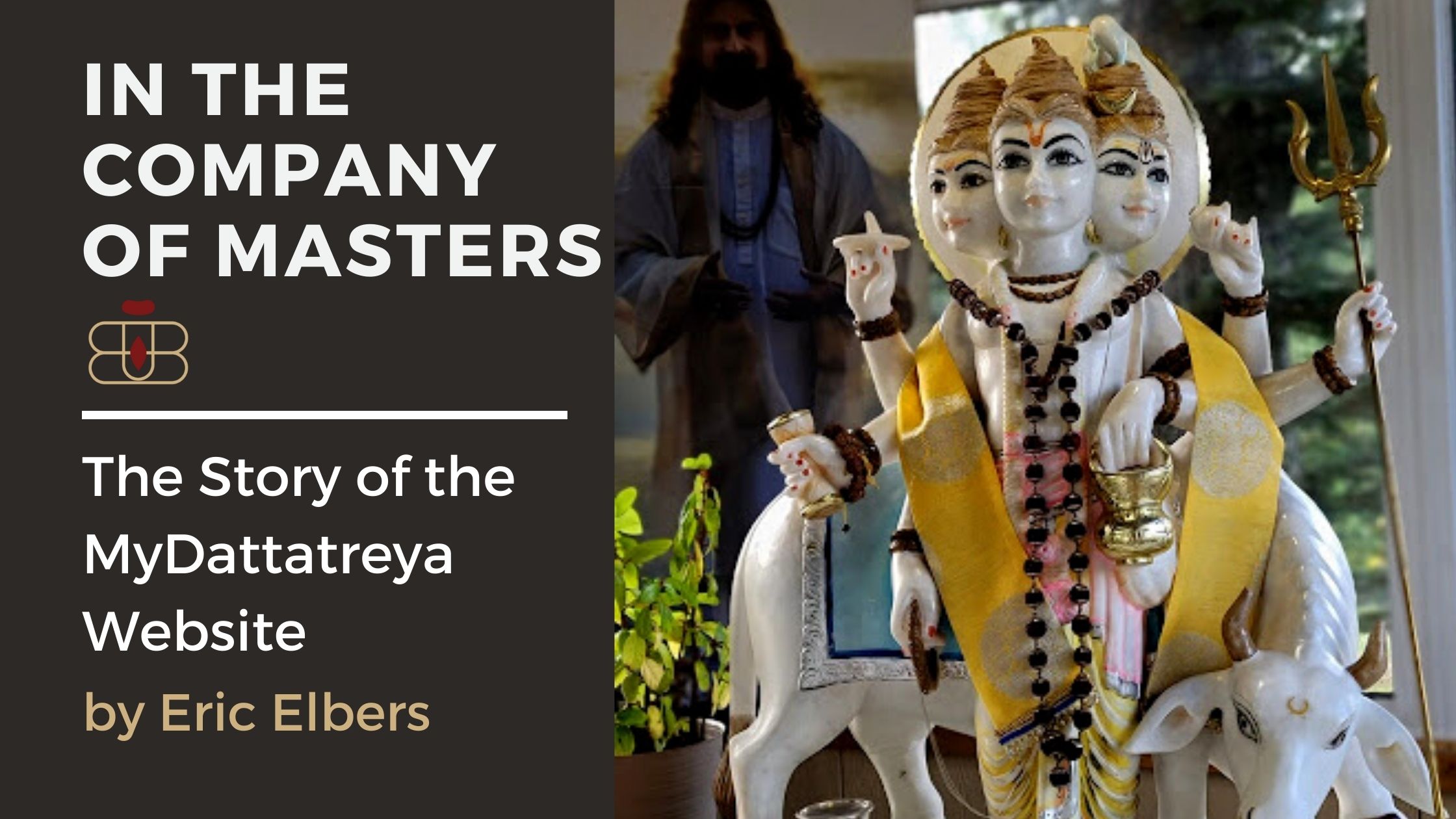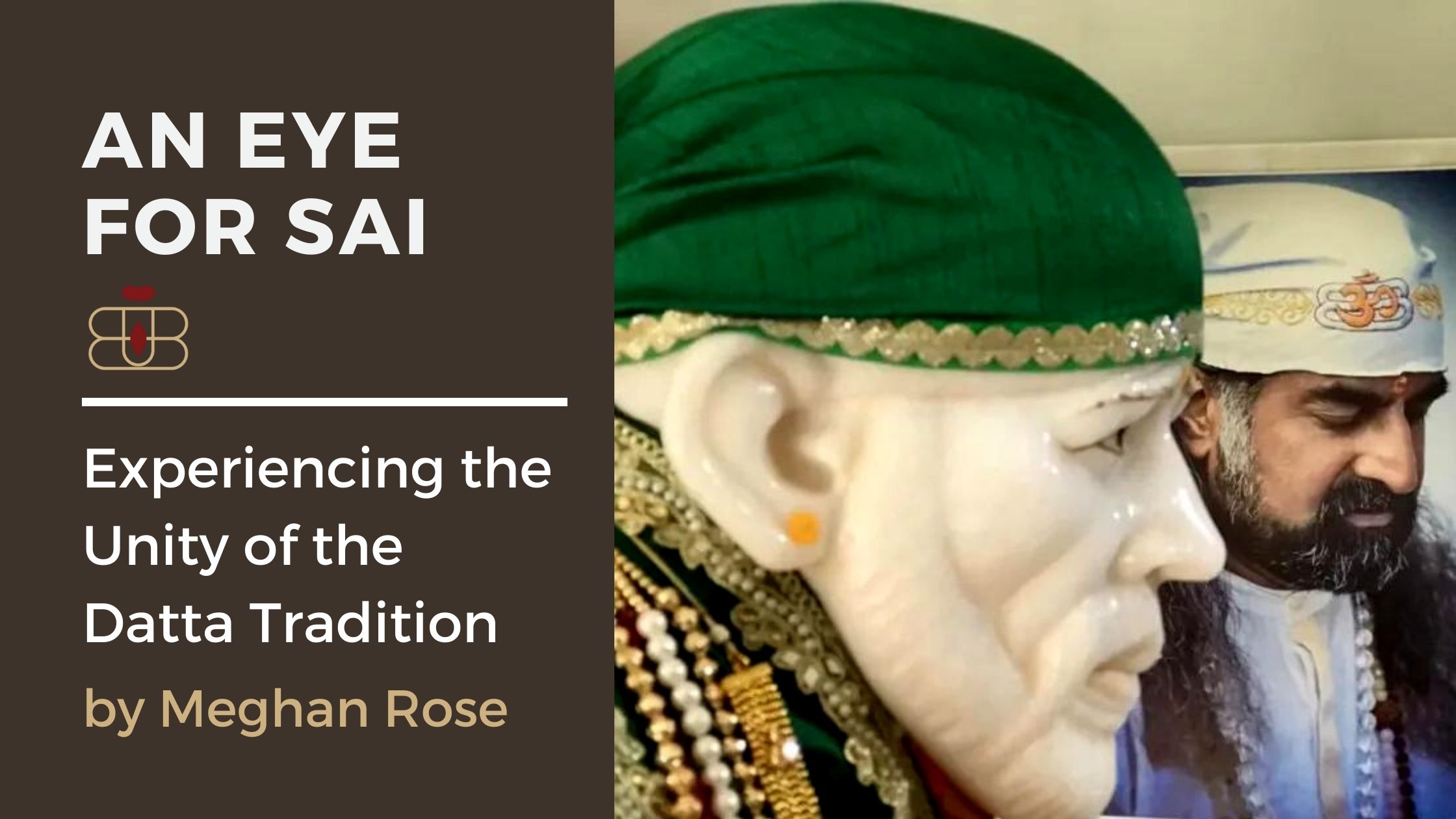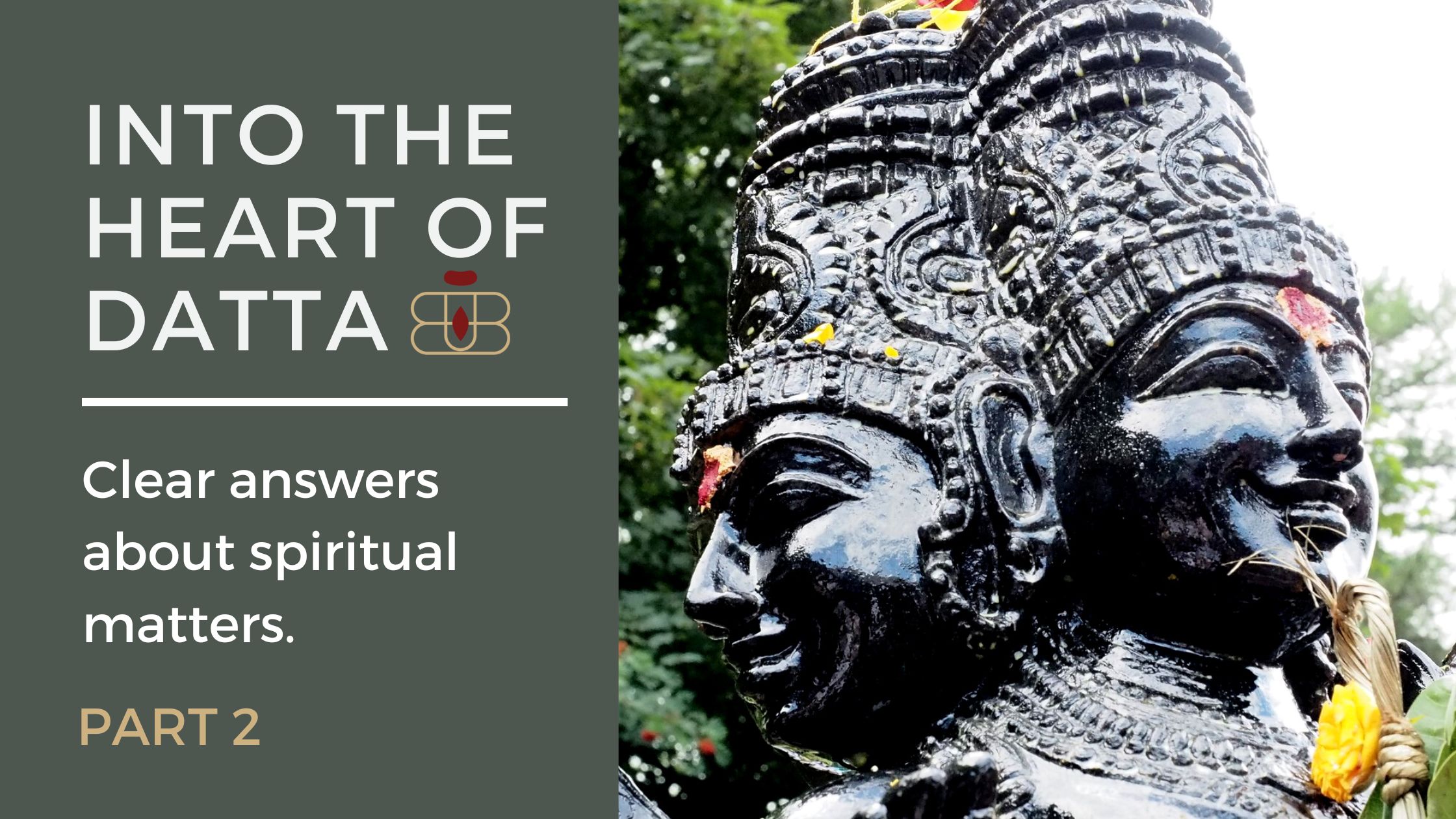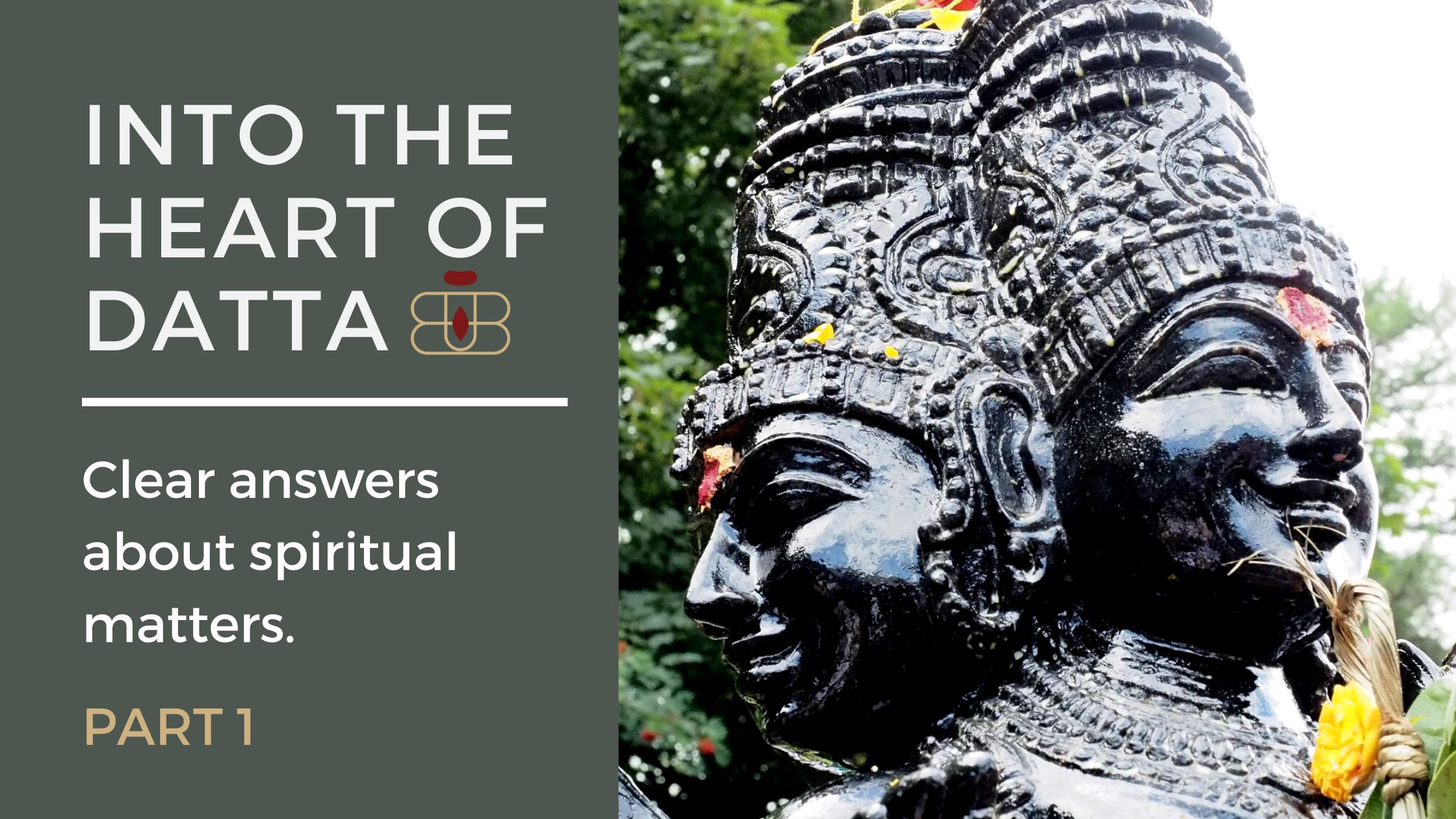Overview and Significance
Hatha Yoga Pradipika begins with: ‘Yoga was first known to Gorakhnath and Matsyendranath, and Swatmarama Yogi knew it by the grace of these two.’
Matsyendra Nath is recognised as one of the most remarkable yogis of the Natha Sampradaya and Maha Siddha Tradition. He enjoys wide recognition as the Guru of Gorakshanath and is less known as one of the founders of the tantric Kaula Sadhana. Matsyendra Nath is an essential person for the Nath Yogis because he is the Guru and the founder of their tradition. Although they support the view that Guru Gorakshanath founded the Nath Order, Matsyendranath and Jalandharnath precede him in the list of Guru Parampara – the lineage of the direct passing on of the Tradition. For this reason, Matsyendranath is also known as Dada (Guru) Matsyendranath, where Dada means ‘Grandfather Guru.’ While all Nath Yogis unanimously accept Guru Gorakshanath as their Guru, Matsyendranath, in his turn, is recognised as the preceptor of their Guru, and therefore as their GrandFather Guru.
Historical perspective
Researchers have been unable to come to a unanimous agreement about the exact date when Matsyendranath lived. According to various opinions, he lived not before the seventh century and no later than the twelfth century. The earliest date is based on the fact that he lived simultaneously with Narendra Deva, king of Nepal, who ascended to the throne in about 640 A.D. and ruled till his death in 683 A.D. The latest date is based on the biography of Saint Jnaneshvar, by which he lived not long before him.
The Great Yogi
There are many legends in India and Nepal describing the supernatural abilities and miracles performed by Matsyendranath. It is widely believed that, like Guru Gorakshanath, he also reached a state of immortality and is endowed with extraordinary magical powers, much more than the term ‘ordinary human being’ can ever express. He is mentioned by the author of HYP Swatmarama as one of the Great Siddhas, who destroyed the hold of time (maya) by the power of Hatha yoga, and became able to wander in the Universe at his wish.
Sometimes Matsyendranath is compared with Shiva in the Indian Natha Tradition, and in the Buddhist tradition of Nepal, he is worshiped as Avalokiteshvara– the divinity of the Buddhist Pantheon. One of the most remarkable of the miraculous powers mentioned in the legends about him was his ability to live in his own body and enter other bodies by free will and remain there for prolonged periods, or permanently. If we accept this as true, he is immortal and keeps on passing from one body to another. It is believed that in his knowledge of the occult sciences and magic, he was second to none, maybe excluding only his great disciple, Gorakhnath. He also has a reputation as a famous tantric practitioner; for example, in one legend of Nepal, he appeared as the great sorcerer who, by the power of his magic, exterminated the army of the King of Nepal, which later was restored by Gorakhnath. He is honored as their Guru and as an ideal of sadhaka by many modern practitioners of tantra, especially by those who try to follow the Path of Kaula Shakti Marga.
Matsyendranath is the name he is referred to in the northern part of India, while Machamuni is the name he is known by in the southern part. The word ‘matsya’ means fish, so it translates to ‘Lord of the Fishes.’ He is also known by various other piscine names, including Mina, Macchandar, and Macchaghna. He is associated with both the eastern and western transmissions of Kaula Tantra and their later southern variant known as Sambhava. A variety of texts related to these traditions are attributed to him.
Abhinavagupta of Kashmir (1000 CE) mentions a Siddha by the name of Macchanda whose consort is called Konkanamba (The Goddess from the Konkan). This indicates that Matsyendra lived in southern India, probably the Deccan, in the 9th to 10th centuries. He reformed the practices of the Kula, which were associated with yoginis living on cremation grounds. The Nath tradition and legends found in several texts, including the Matsyendrasamhita and the early 15th-century Maithili Gorakshavijaya maintain that Matsyendra’s disciple Gorakshanath reformed Matsyendra’s licentious ways, rescuing him from ensnarement in the land of women.
Life History
Matsyendranath’s date and place of birth have many interpretations from different sources of text and research and historians. One legend goes this way: Karthikeya, son of Lord Shiva, threw away the Aagman Tantra of Shakti into the ocean. So, Lord Shiva had to go into the sea to get it back. But a big fish had swallowed the Aagman Tantra. For twelve years, the Aagman Tantra was inside the stomach of a large fish. To get the Tantra back Lord Shiva had to dive into the ocean where he saw brightness radiating everywhere; he saw the Aagman Tantra inside the fish stomach and removed it. Out came Masyendranath.
Another legend is the Buddhist Vajrayana version of the life story of Matsyendranath, story number eight in Chaturaśīti-siddha-pravritti or ‘The Life Stories of the Eighty Four Siddhas’ by Abhaya Datta. This text is one of the oldest written records about the life of Matsyendranath. Below is the translation from Hindi made by Yoga Nath:
Guru Minapa was born in Eastern India and was a fisherman by caste. His Guru was Mahadeva (Shiva), who blessed him with mundane siddhis (powers).
At some distance from Kamarupa (modern Assam) was an ocean called Ita (modern Bengal Bay). The fishermen living there were daily catching fish and selling them on the local market. One day, one of them fitted a hook into the net made of cotton, fixed a piece of meat on it, and cast the net into the ocean. A colossal fish entered the net. When he tried to draw it out of the sea, he could not; instead, the fish dragged him deep into water until he finally went under. The fish swallowed him, but miraculously, protected by his (good) karma. He didn’t die.
About the same time, Uma Devi asked from Mahadeva (Shiva) to narrate her the lesson of Dharma, to which he answered that his teaching was very secret, and not for everyone, ‘If you make a house deep into the ocean (where nobody will hear us), then I will initiate you there,’ he told her. Uma Devi did, and after they both reached there, Shiva started narrating his lesson. While he was speaking, a large fish (the same fish that swallowed the fisherman) arrived and stopped right under the house they were sitting in. Shiva had not finished his lesson yet, but Uma became overpowered by sleep. Shiva was narrating, and from time to time, asked her, ‘Do you understand what I am saying?’ And it was the fisherman, who, while listening from the stomach of the fish, was answering, ‘Yes, I understand.’ When Mahadeva had completed his Dharma lesson, Uma Devi awoke from her sleep and said, ‘Now you can continue.’ Mahadeva answered, ‘I have finished the lesson; what else do you want to know?’ Uma replied, ‘I was listening for a while but later fell asleep and didn’t listen.’ Puzzled, Mahadeva asked her, ‘Then who was saying, “Yes, I have understood?”’ Uma answered, ‘No, that wasn’t me.’
When Mahadeva applied his yogic vision, he saw that a man in the fish’s stomach under the house they were sitting in had listened to the teaching from beginning till end. So he thought, ‘Now he has become my disciple. But he will have to wait till his time has come.’ So he ordered the fisherman to practise the sadhana he had learned (without taking him out of the fish) and declared that he had accepted him as his disciple. So for twelve long years, the fisherman practised his sadhana inside the fish.
One day at Shree Tapri, another fisherman caught that big fish and dragged it out of the water. After seeing its (unusual) heaviness, he thought that it might have gold or silver in its stomach. With the intent to take it out, he cut open her belly and saw a man sitting there. Shocked by this, the fisherman asked him, ‘Who are you?’ The answer came: ‘I was a fisherman like you. At the time of the rule of King Amuk, this fish dragged me into the ocean and swallowed me.‘
When people who had gathered to see him calculated the time that had elapsed, they found that twelve years had passed. All were astonished to see this miraculous event. Since that moment, he became famous under the name Minapa. Afterward, people started to praise him, and when he started dancing, his feet were sinking deep into the earth, as if the ground was wet. When he continued his dance on a big stone, his feet also entered deep into it, as if it was wet and soft like mud. All around were amazed to see this miracle. On seeing their astonishment, Minapa uttered:
‘Because of previously accumulated good karma
And the power of chanting the Sacred Mantra
I have received these beautiful qualities; hey ho, my Mind Jewel!‘
Later he spent five hundred years performing various deeds for the uplifting of humanity. Minapa, Vajrapada, and Achintapa (Achintya) are three names under which he became famous in different places. Initially, he had mundane Siddhis (supernatural powers), but later, he entered the True Path and became dissolved into the Eternal Void.
Another legend tells that Matsyendra was born under an inauspicious star, leading his parents to throw the baby into the ocean. The baby was swallowed by a fish in which he lived for many years. At one time, the fish swam to the bottom of the ocean, where Shiva was imparting the secrets of yoga to his consort, Parvati. Upon overhearing the secrets of yoga, Matsyendranath began to practice yoga sadhana inside the fish’s belly. After twelve years, he finally emerged as an enlightened Siddha. This story is often given as the origin of his name ‘Lord of the Fishes’ or ‘He Whose Lord is the Lord of the Fishes.’ Other versions of the legend exist, including one in which Matsyendranath was born as a fish and turned into a Siddha by Lord Shiva.
Tibetan renditions of the story tell of a fisherman-turned-Siddha named Mina, who was eaten by a fish while working in the Bay of Bengal. Another legend says that when Gorakshanath visited Patan in Nepal, he captured all the rain-showering serpents of Patan and started to meditate after being disappointed by the locals as they did not grant him any alms. As a result, Patan faced drought for a long time. On the advice of his advisers, the king of Patan invited Matsyendranath, Gorakshanath’s guru, to Patan. When Gorakshanath learned that his teacher was in Patan, he released all the rain-showering serpents and went to see him. As soon as the rain-showering snakes were set free, Patan again got plenty of rainfall every year. After that day, the locals of Patan worshipped Matsyendranath as the god of rain.
Yet another legend says the virya or sperm of Brahma is responsible for the birth of various saints and prophets on earth. Brahma’s virya or sperm fertilised any living form and carried the utmost principles and moral values within it. It fell on various parts of the earth at the advent of Kali Yuga. The Supreme Godhead, Brahma, had decided to spread moral values (righteousness, devotion, knowledge, and yoga). The Virya fell into the mouth of a fish that became pregnant. The fish and egg inside its stomach reached a secluded spot where Lord Shiva happened to teach the principles of creation to Mother Parvati. When Parvati asked Shiva, ‘What is the base of all Illusionary Creation (Maya)?’ an answer came from the egg of fish, ‘Brahma Tatva’ or ‘God Element.’ Lord Shiva, dazzled by the correct answer, started looking into the river and saw a child inside the egg. He immediately recognised the child as ‘Kavi Narayan,’ the poetic avatar of Lord Krishna. He then blessed the child and told him that he would give him a benediction once he was twelve years old. In due course, the fish washed ashore on the banks of a sea in Maharashtra. A fisherman couple who had no child saw the egg pecked at by storks. As soon as the egg cracked, a baby came out crying loudly. The fisherman then realised this miracle and, full of compassion, took the baby home. The baby was named Machhindranath – Macch (meaning fish), Indra meaning (God Indra), and Nath (meaning Lord – thus Lord of the Sea Fish). The child was much loved in the fisherman community. From four to five years, he started going with his father fisherman to the river bank to fish. But due to the knowledge he had received from Shiva, he could not witness the pain of fishes caught. So he started to throw them back into the river. His father said to Matsyendranath that he would become a beggar if he didn’t know how to make a living. The enlightened child judged it better to beg and eat sinless food than to make a sinful living in the killing.
After that, Matsyendranath ran away from home and went to Badrinath and meditated there, living on fruits and water for twelve years continuously. What remained of him was skin over bones. Then he had a divine vision of Lord Dattatreya. Lord Dattatreya gave him Mantra Diksha (Mantra Initiation), and instantly Matsyendranath’s ignorance disappeared. Lord Datta also asked him, ‘Where is Ishvara?’ Matsyendranath answered, ‘Ishvara is everywhere!‘ to which Lord Datta nodded in agreement. Lord Shiva also gave him a divine vision and reminded him of how he had attained the Atma Jnana (Self Realisation) when in the womb of the fish. He told Lord Datta, ‘Give Matsyendra the efficacy and power of siddhis (spiritual powers).’ Lord Datta asked all Gods to grant him this boon. He guided him to gain victory over the Pancha tattva (Five Elements). Matsyendra received special blessings and distinctions shown by Shrungi (wearing ornaments made out of animal horns), Karnavedha (Hindu sacraments of ear piercing), plus other attributes, along with authority to lead the Nath community. Thus, Matsyendranath received complete spiritual realisation!
Lord Shiva (Rudra) taught him all the mysteries of warfare and miracles, which he used for uplifting humanity and saving it from the evil that Kali Purusha was spreading. From then on, Matsyendranath became a Siddha who could see from the beginning until the end of time.
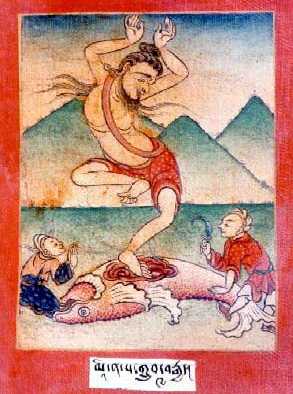
Tradition and Gurus
The Path of Naths
Some legends show Matsyendranath as a ‘fallen’ yogi, who became enamored by women and forgot about his yogic past, and that it was Goraksh Nath who came to rescue him from this situation. Some other sources say that he had committed all of his ‘mistakes’ only for the benefit of the world and his great disciple, being unaffected by all that he was doing (if we suppose that his spirit was free from his body, then it could be accepted as true). Indeed, being the guru of the Supreme Lord was not a difficult task for him.
Matsyendranath and Gorakshanath are considered ideal examples of the relationship between Guru and disciple and form the Path for others to follow. All those who have attained their ultimate freedom and immortality walked by this path only. One of the most excellent experts of Hatha Yoga, the great yogi of the Natha Tradition, Swaatmarama has assigned credit of all his achievements to the grace of Matsyendra.
Many different lists of the Nine Great Nathas exist, and Matsyendranath appears in almost all of them. Amongst the members of the Nine Great Nathas, he is known as Maya Svarupi or Maya Pati Dada Matsyendranath, names which have symbolic meaning behind them. Maya Svarupi can be translated as ‘being the form of Maya (illusion), and Maya Pati means the Master of it. In this context, he appears not like a limited human personality but rather more like the universal principle of the yogic transforming power. After the awakening of Kundalini (Personal Divine Power), it is not only the individual Guru who is guiding the yogi on his path, but the entire existence becomes his Guru. Maya changes her role from a mere illusion to Yoga Maya, the power of transformation leading towards the Spiritual Self.
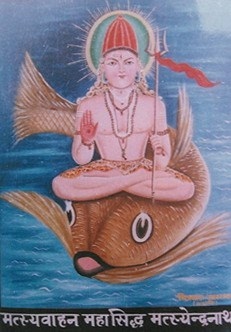
Teachings
Matsyendranatha or Machhendranath left several sacred texts belonging to this mystical school. He is believed to be the author of Kaula-jnana-nirnaya (‘Deciding wisdom of Kaulas’) and supposedly wrote Yogavishaya (‘The Subject of Yoga’) under the pen-name Minanath.
For liberation, which is the objective of those in the Nath Tradition, to become an adept, one needs to find a true Guru with the stature of Matsyendranath, who belongs to Avadhuta/Siddha lineage and is revered as Shiva himself. Such a teacher can explain to his disciple the art of breath retention and the very process of absorption of mind resulting in the awakening of kundalini, without any visible effort from his side. In simple words, Self-Realisation can be achieved only through personal effort and experience, via the personal yogic practice of breath refinement, which develops a higher level of consciousness. Gradually, the initially merely physical aspects of the breath practice unfold into metaphysical elements and ultimately lead the practitioner to the goal.
Gorakh Bodh, the book containing the intense dialogue between a guru and his disciple, should be read by everyone who aspires to travel the path of yoga. Another work, comparable in the magnitude of direct knowledge communicated by a teacher to his disciple, is Tripura Rahasya, where Parashurama converses with Dattatreya.
Gorakh Bodh is one of the best books to understand Nath yogis. The book is a conversation between Guru-disciple Matsyendranath and Gorakshanath. It is a practical, hard-core discussion, far from a philosophical dispute. It states what can be done and achieved because it had been accomplished and achieved by the conversing yogis themselves.
Below is an extract from Book Two of the conversations:
Gorakhnath asks:
Swamiji! Where does Prana originate from?
Where does the mind arise from?
Where does speech come from?
Where does speech disappear?
Matsyendranath says:
‘Avadhu’ Prana arises from cognition (avagati) of the spirit
The mind originates from Prana
Speech comes from the mind
Speech disappears in the mind
Cognition produces prana. It emerges from the recognition of the spirit; this is the beginning of knowledge.
Ignited by prana, the mind produces a formless thought; the sound of speech carries it, shaping and expressing a formerly formless thought into the form of a word.
Enriched by the mind and expressed in speech, the thought becomes ‘conscious’ (spoken) and dissolves in the mind again.
The more thoughts are born by the mind and absorbed or received, the more potent the consciousness becomes.
Gorakshanath says:
Swamiji! What is consciousness? What is its essence?
What is birth? What is death?
At what place do five elements continue to stay?
You are the true Guru; kindly reply to my question.
Matsyendranath says:
Avadhu! Light (Jyoti) is consciousness; fearlessness is the essence,
Awakening is birth; sleeping is death,
Five elements continue to stay in the light,
This opinion was given by Matsyendranath.
The light discussed here is not a physical phenomenon – it is the light of understanding, jnana, dawning on the seeker. Light in the yogic texts refers to the light of knowledge.
By becoming awake, one will begin to understand every aspect of life and death, and with the proper understanding, fear will disappear. A yogi will recognise life in awakening and death in sleep, and fear will no longer affect him. Natural sleep is not to be feared, and awakening after sleep is perceived as a natural process (similar to life after death).
When the conscious mind reaches subconsciousness, it enters a dreamlike state. Then, awakened, the mind returns to the conscious state; such are the movements of consciousness. Five elements dwell in the consciousness (light)of the void, and it binds them together in specific proportions. Only the supreme light of wisdom and knowledge of immense proportion can mix and paste building materials of such complexity together to create matter so that the process of creation can continue.
The Navnath Sampradaya is a tradition, a way of teaching and practice. It does not denote a level of consciousness. If you accept a Navnath Sampradaya teacher as your Guru, you join his Sampradaya. Usually, you receive a token of his grace—a look, a touch or a word, sometimes a vivid dream or a strong remembrance. Sometimes the only sign of grace is a significant and rapid change in character and behavior.
Some legends say that the first Nath teacher was Rishi Dattatreya, the great incarnation of Brahman, Vishnu, and Shiva; other traditions name Shiva as the first (Adi) guru. The peculiarity of the teaching is its simplicity, both in theory and in practice.
‘The Nine Masters’ tradition (Navnath Parampara) is like a river—it flows into the ocean of reality, and whoever enters it is carried along. There is a succession of Gurus and their disciples, who, in turn, train more disciples whereby the line is maintained. But the continuity of tradition is informal and voluntary. It is like a family name, but here the family is spiritual. Belonging to a tradition is a matter of your feelings and conviction. After all, it is all verbal and formal. In reality, there is neither Guru nor disciple, neither theory nor practice, neither ignorance nor realisation. It all depends on what you take yourself to be. Know yourself correctly. There is no substitute for self-knowledge.‘
– Nath Guru Nisargadattaraj from his ‘I Am’ book
The Nath Sampradaya testifies to this virtuous devotion. It emphasises the knowledge that comes from devotion, like post-knowledge devotion. It taught bhakti. In this way, disciples of immense merit were created. Shri Gahininath created Shri Nivrttinath, and Shri Nivrttinath created Shri Jnaneshvar Maharaj as an ideal.
The appearance and lifestyle of Nath ascetics are very similar to those of other North Indian ascetics; they wear dhotis (never undergarments or trousers), they cover their bodies in ash, and they often wear their hair in jata (long hair), in dreadlocks. However, some Naths keep their hair short. They usually live by a dhuni or sacred fire, and many smoke cannabis. There are very few female ascetic Naths.
The religious life of householder Naths consists of devotional practices, particularly the communal singing of bhajans (kirtans) and listening to public performances of Nath bards singing epic romances about legendary Nath ascetics, kings, and heroes. In some regions, Nath householders function as hereditary temple priests. The Naths have long been associated with various practices, through which they are said to have attained siddhis or spiritual powers, and jīvanmukti, liberation, while living. Often they are said to achieve the latter in a body made immortal through yoga or alchemy. The Naths’ reinvention of Hatha Yoga was a continuation of the process begun in the Matsyendra Samhita. It involved a reformation of tantric ritual, relocating it to the body of the individual yogi and doing away with Tantra’s complex paraphernalia and transgressive rites. This is stated explicitly in these early texts.
The final verse of the Goraksha Shataka ̣says:
We drink the dripping liquid called bindu, not wine.
We eat the rejection of the objects of the five senses, not meat.
We do not embrace a sweetheart but the sushumna nadi, her body curved like kusa grass.
If we must have intercourse, it takes place in a mind dissolved in the void, not in a vagina.
The practice of khechari mudra is a significant Hatha Yoga practice in which the yogi inserts his tongue into the cavity above the soft palate to drink the nectar of immortality – Hatha Yoga Pradipika
Sacred Practices/Sadhana
The Natha Sampradaya is an initiatory Guru-disciple tradition. Membership in the Sampradaya is always conferred by initiation (diksha) by a diksha-guru — either the lineage-holder or another member of the Sampradaya whose ability to initiate has been recognised by his diksha-guru. The Natha initiation itself is conducted inside a formal ceremony in which some portion of the awareness and spiritual energy (shakti) of the Guru is transmitted to the disciple. Also, the new Natha receives a new name to support his new identity. This transmission or ‘touch’ of the Guru is symbolically fixed by applying ash to several parts of the body. Various yogic and tantric practices are traditionally associated with the Natha lineage, but above all of them is the path of devotion to the Guru.
When one attempts to come in direct touch with Divine, all attempts of cheating and negotiation are of no use. The total surrender of oneself to the Guru is the only alternative and the only method. To receive everything, one has to give up everything, personal attachments, aspirations, and ambitions. Ishwara-pranidhana can be translated as ‘offering one’s life to God.’ In practice, this means total surrender to the Divine will, dedicating one’s life to God. The divine relationship between Matsyendranath and Gorakshanath as guru-disciple serves as an example. It is one of the fundamental conceptions of all religions and spiritual lineages existing in India that the Guru should be considered as the embodiment of the Divine. When devoted spiritual seekers become ready for their spiritual journey, God Himself assumes the form of Guru to guide them. Through the Guru, God reveals Himself to an aspirant and guides him on the path of yoga.
Therefore, the sadhana of Nath yogis centres around unshakable faith and devotion towards Shri Guru. Some practices can help bring about glimpses of the Divine State, but none of them can help realise the same state permanently because Divine grace itself is required for this. Bhagavan Krishna says in the Bhagavad-Gita: ‘It is almost impossible to transcend my Divine illusion (Maya) consisting of the three modes of ignorance (gunas). Only those who have totally surrendered themselves to Me can cross over it.‘
By obtaining shaktipat, (the awakening of personal divine power) through the supervision and grace of one’s Guru, Param Pada (Self Realisation) may be obtained. A patient and sincere disciple can achieve establishment in that state only through the grace of the Guru. Adi Guru Shiva says: ‘Nothing and nobody is greater than the Guru, more than the Guru, higher than the Guru, and more significant than the Guru. This is the order of Shiva, the order of Shiva, the order of Shiva.‘
At the first stage of the initiation into the Siddha tradition (In Southern India, Nath gurus are also called Siddhas), the Guru Mantra is given to a yogi by his Guru. It is compulsory for disciples who decide to follow an ascetic path, and is given to lay disciples as well. The word mantra means ‘to control the mind.’ The Guru mantra is different from all other kinds of mantras. It must be continuously repeated by the yogi during his daily activities, especially in the primary stage of his sadhana. This allows stopping all activity of the mind and at the same time preserving awareness of the practitioner, at once taking him beyond all his limitations and difficulties to the higher spiritual realms. Thus, the Guru Mantra plays a prominent role in raising the Divine Power, also known as Kundalini Shakti.
The Natha Yogis do not adopt any written work having the word Tantra in its name as the canonical or officially accepted scripture of their lineage; they are not followers of any of the written Tantras. However, it does not mean that they disregard practices that can be categorised as Tantric. Tantra is Kundalika-Math. Supposing we accept the definition of the word tantra in this light, Nathas can then be qualified as Tantric adepts per se because the conception of the rising Kundalini plays a prominent role in their teaching.
Gorakshanath explains kundalini as a Divine Power existing in two states, one is dormant (as sleeping), the other is awake. While asleep, she appears as a coiled serpent who sleeps at the Mooladhara chakra situated at the base of the spine. After she becomes awakened by yogic techniques, she moves up through the central channel Sushumna to the Sahasrara chakra, her final destination. In her journey, she passes through chakras and becomes united with her consort Shiva on each level of her journey.
The lineage of Nathas has exercised an enormous influence on the spiritual life of India and beyond its borders. The Nath yogis played a prominent role in propagating Shaivism all over India and influenced the development of many later Shaiva and Shakta traditions all over the country. Moreover, numerous yogis of the lineage have realised the state of Siddha and contributed to the spreading and protection of Sanatana Dharma. Their own lives exemplify the spiritual ideals of life.
Yogis of the Natha Lineage developed a complex system that later became known as Hatha Yoga. Those practices of Hatha Yoga proposed for the maintenance and health of the human body proved themselves very effective as alternative medicine. In today’s world, millions of people are using the principles of Yoga in their lives, practising the basic Hatha Yoga exercises as the way to maintain good health. Some become enlightened through the Kriya Yoga tradition. The ideas and practices introduced by the Guru Gorakshanatha were much ahead of his time, and his teachings have not lost their actuality, even until today.

Miracles
During his journey, Matsyendranath decided to worship Goddess Hingala. But the problem was that eight Bhairavas (fierce manifestations of Lord Shiva) were guarding the temple. He tried to enter, but the guards attacked him. So he appealed to the gods, and all weapons decayed and turned to rust. Then, with a charm casting holy ash, he hardened his own body like steel. He challenged the Bhairavas, who threw dangerous weapons at him, but they all turned out to be blunt. He countered every weapon and thereby proved them a failure.
Goddess Hingala quickly proclaimed to everyone around, ‘He is a great saint. Don’t be scared! Let’s get blessed by his divine vision.’ Hearing that, they all felt heartened. The moment Matsyendranth came closer, being extremely pleased, the Goddess emerged in front of him. She gave him two new weapons; the Sparsha Astra and the Bhinna Astra.
Contemporary Masters
Matsyendranath is typically listed as having eight disciples. The list of his disciples varies between different temples and lineages but commonly includes Gorakshanath, Jalandharnath, Kanifnath, Gahininath, Bhartarinath, Revanath, Charpatinath, and Naganath. Along with Matsyendranath, they are called the Navanaths. While Gorakhnath is generally considered a direct disciple of Matsyendranath, they may have lived hundreds of years apart.
Matsyendranath and Gorakshanath’s Birth
According to this legend, one day, Matsyendranath came to a village for alms where a devout Brahmin, named Sarvopadya, lived. His wife, Saraswati, was a beautiful, pious, dutiful, and loyal woman. However, they were miserable since they could not conceive a child. She looked at the visiting yogi with great expectations after giving him alms. He quickly understood what the woman was suffering from, produced some vibhuti (sacred ash), and told her, ‘mix this holy ash with kheer (a dish made with milk, rice, and sugar) and consume it only after taking a seasonal bath at nightfall which will grant the fulfillment of your wish.’
Afterward, Saraswati talked to her neighbour about yogis and sacred ash. The neighbour planted doubt in her mind not to trust such yogis. She then threw the designated holy ash into a cow dung pit outside the village. It was her misfortune that she destroyed the desired result herself.
Twelve years later, Matsyendranath returned to the town and asked the woman what happened to the ash and whether she conceived a child. She confessed that she had thrown the ashes away on a cow dung heap. Then they went out to look at that spot. Matsyendra brushed away the accumulated cow dung and found a twelve-year-old boy, a perfect yogi because he had been practicing sadhana there since birth. Matsyendra sprinkled him with ash and named him Goraksha (Go-rakh or cow ash, Raksha or protector).
In another story adventure, Matsyendranath, whose body is beautiful from doing yoga, is held as a sex slave by a tribe of yoginis who find him irresistible. They don’t want to let him go, and he is completely under their spell – or else he enjoys it so much there that he does not want to leave. Gorakshanath hears of this and, determined to rescue his Guru, comes up with a scam – he dresses up as a dancing girl and enters the Queendom of Yoginis in that disguise. Performing before Matsyendranath, Goraksha beats a drum saying, ‘Awaken, Matsyendra!‘ The two make their escape from there, and Goraksha gives Matsyendranath a ‘refresher course’ in hatha yoga to bring him back to his full self. The two great Guru-disciple yogis train each other and others in hatha yoga, thereby founding the lineage of Nath Yogis.
One of Goraksha’s disciples, Swatmarama, composed the Hatha Yoga Pradipika, still in print today, which sets forth teachings on pranayama, the chakras, asanas, kundalini, the bandhas, nadis, and mudras. Hatha Yoga Pradipika is a brilliant text, although it is meant primarily for sannyasins and wandering yogis whose path is to overcome desire. Awakening happens naturally through practice.
Holy Sites and Pilgrimages
Some of the holy pilgrimages places associated with Matsyendranath in India and Nepal
- Matsyendranath Guru Peeth is in Sri Guru Parashakthi Kshethra: Madya Mangalore in the South of India. The closest airport is Bengaluru and Mangalore.
- Shri Kshetra Matsyendranath Samadhi temple is in Mayamba Sawargaon, District Beed, Maharashtra (Garbhagiri Parvat)
- Machindranath temple in Kille-Machindragad Tal: Walwa (Islampur) Dist: Sangli, Maharashtra
- Machindranath Temple, Ujjain, Madhya Pradesh State, India
- The Rato(Red color) Machhendranath Temple stands about 400 meters south of Patan’s (Lalitpur) Durbar Square, Nepal, in a large courtyard known as Ta Baha. It was built in 1673 on the foundations of older temples. The temple honors Matsyendranath, a Nath yogi of the early tenth century, recognized as descended from Lord Shiva, his teacher.
- Kadri Manjunath Temple, Mangalore, Karnataka
- Hellapatnam in Bengal
- Chitrakoot – Karvi, (Border of Madhya Pradesh and Uttar Pradesh, near the banks of the river Piyushini
- Gumbahatta – Kalimpong, Dist. Darjeeling, West Bengal
- Thiruparankundram – near Madurai, Tamilnadu
- Vishwayogi Swami Machindranath Mandir, Mitmita, Aurangabad, Maharashtra
- Machhindra Nath Mandir, Inside Ambagate, Amaravati, Maharashtra
